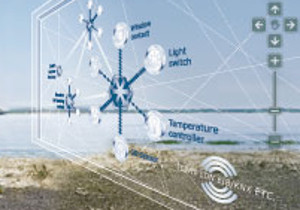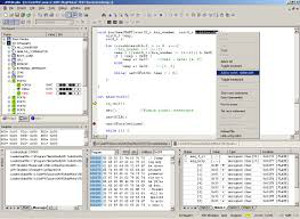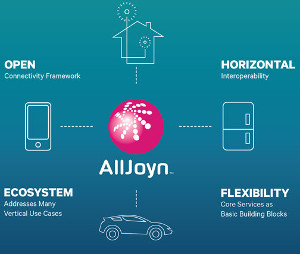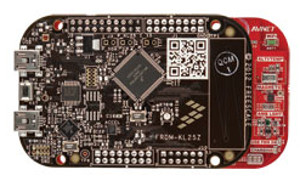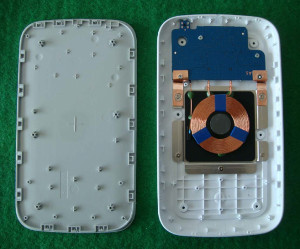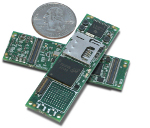One of the greatest hindrances to a successful Internet-of-Things device is the amount of energy consumed and level of bandwidth required for a wireless solution. However, these challenges have been overcome and now your M2M and IoT-enabled devices with low-bandwidth requirements can take advantage of a brand new system that is ideal for the task – SigFox.
SigFox is a new wireless connectivity platform being deployed across many countries, whose aim is to provide low-power, wide-area network infrastructure across large areas, for connecting Internet-of-Things and Machine-to-Machine telemetry applications that have limited bandwidth needs.
By providing radio communications with embedded devices across a wide area, and without the relatively high cost of cellular telephone networks, SigFox aims to make it fairly easy to integrate their platform with your other software applications.
The SigFox network is highly scalable and built for a huge number of devices, offering a global wide-area cellular connectivity solution from customer’s devices right through to their software applications – with very strong energy efficiency. It has been estimated that over the next decade, 14% of the booming IoT market will be made up of connected objects using low-power, wide-area networks such as SigFox or LoRa.
The fundamentals of SigFox are this – separate antennas are deployed on towers across a wide geographic area, in a similar manner to a cellular network – and this new network receives and transmits data from IoT devices in the field, such as water meters or parking sensors.
Ultra-narrowband wireless technology allows very low transmission power levels to be used while still maintaining a robust radio link to the rest of the network. This means devices can run efficiently for a long time in power-constrained installations, for example in remote field devices which can’t easily have their batteries replaced.
SigFox networks are usually built with cells 30-50km apart in rural areas, however in urban areas where there is more potential for radio interference, as well as more obstructions – the distance between cells may be reduced to 10km or less. Between outdoor nodes with line-of-sight the range between connected nodes could be much larger, with line-of-sight link distances of potentially up to 1000 kilometres.
This long-range, wide-area coverage means that enormous areas, even whole countries, can practically be covered with a limited number of SigFox base stations – and this nation-scale connectivity is exactly what SigFox aims to achieve.
Any device within this radius of a SigFox base tower can be wirelessly connected to the SigFox IoT network, providing wireless connectivity essentially anywhere, with minimum infrastructure deployment, simplicity and low cost.
The overall SigFox network architecture has been designed to provide a scalable, high-capacity network, with high energy efficiency, while maintaining a simple star-shaped cellular network topology that is easy to roll out.
Furthermore, SigFox claims that each base station can handle communications with up to a million objects, with an overall system power consumption as small as a thousandth of that of a standard cellular network.
Power management with SigFox endpoint nodes is incredibly efficient – they can wake up whenever they need to send a message, send a quick transmission and then return to a low-power sleep state. This allows devices that periodically transmit sensor data over a network, for example, to achieve very good battery lifetimes – in one example case cited by SigFox, up to 20 years from a pair of AA batteries.
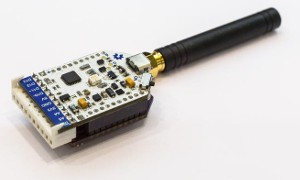 Although the SigFox technology can’t accommodate heavy amounts of Internet data such as streaming media, it is well suited to carrying simple messages in Internet-of-Things and telemetry applications, employing lightweight transport protocols such as MQTT.
Although the SigFox technology can’t accommodate heavy amounts of Internet data such as streaming media, it is well suited to carrying simple messages in Internet-of-Things and telemetry applications, employing lightweight transport protocols such as MQTT.
The SigFox network can carry up to 140 messages per object per day, or one message every 10 minutes, with a wireless throughput of up to 100 bits per second and a maximum message payload size of 12 bytes. SigFox employs ultra-narrowband radio communications in the ISM UHF bands, meaning that it can be deployed in most countries without device-specific radio spectrum licensing.
The specific frequency bands used for SigFox can vary according to the ISM spectrum allocations in different countries, with the 902 MHz band being used in the United States and the 868 MHz band used for most deployments in Europe. The SigFox ultra-narrow-band technology coexists well with other users of these frequencies, without collisions or capacity problems.
Thanks to SigFox’s aim to roll out their network to 60 countries over the next five years, with particular interest coming from the “smart grid” and energy management sector – we know this system will be a success. The SigFox network currently covers all of France (with 1200 base stations), Spain and the Netherlands, along with London, Manchester and several other UK cities.
However, this is not an international-only system – here in Australia we’re about to get started with SigFox, whose rollout will be announced this month. We predict a rapid take-up and look forward to working with future an existing customers to harness this exciting new technology.
Here at the LX Group we have end-to-end experience and demonstrated results in the entire process of IoT product development, and we’re ready to help bring your existing or new product ideas to life. Getting started is easy – click here to contact us, telephone 1800 810 124, or just keep in the loop by connecting here.
LX is an award-winning electronics design company based in Sydney, Australia. LX services include full turnkey design, electronics, hardware, software and firmware design. LX specialises in IoT embedded systems and wireless technologies design.
Published by LX Pty Ltd for itself and the LX Group of companies, including LX Design House, LX Solutions and LX Consulting, LX Innovations.


